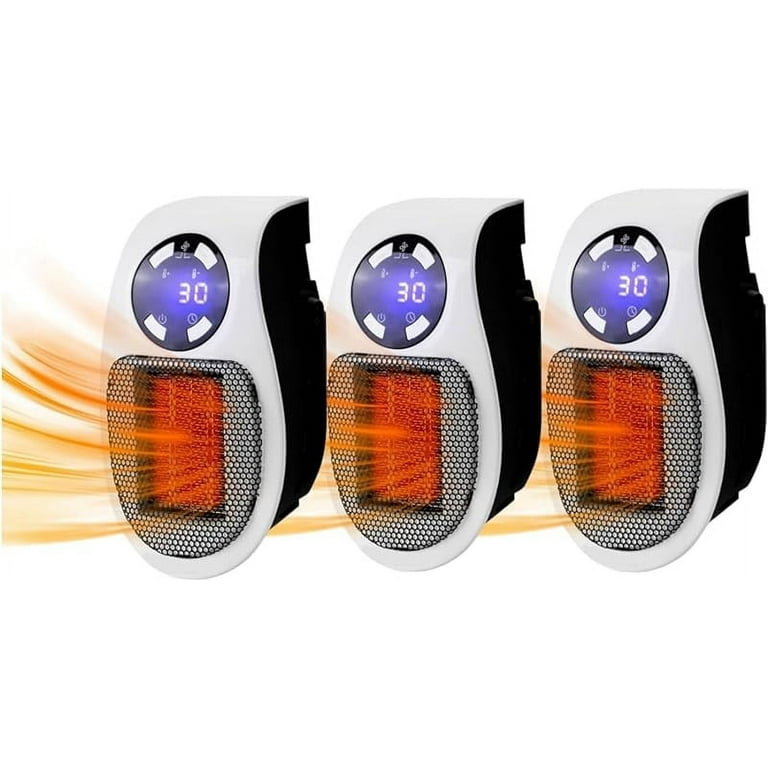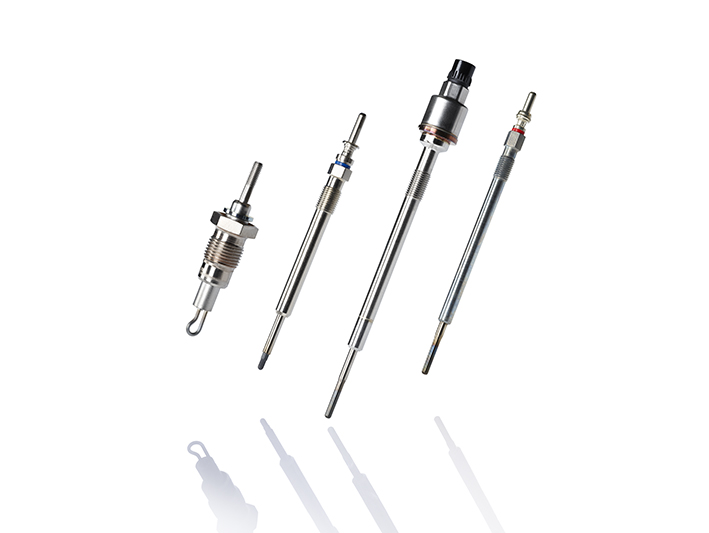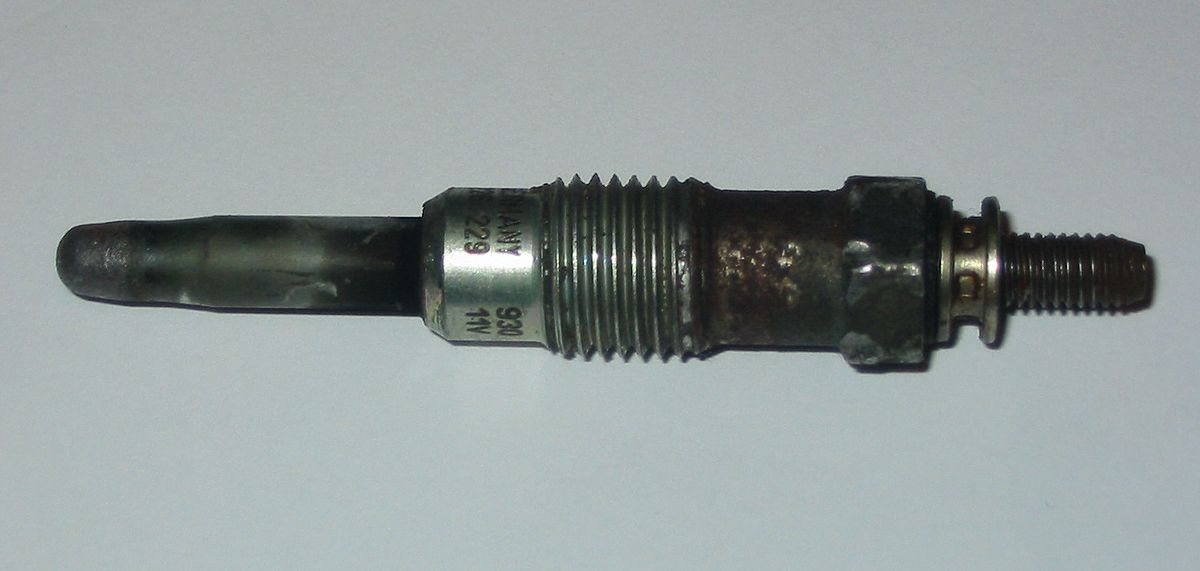The purpose of a heater plug is to preheat the engine’s combustion chamber. This ensures easier starting in cold weather conditions.
Heater plugs, often referred to as glow plugs, play a crucial role in diesel engines. They help ignite fuel by warming the air in the combustion chamber, especially during colder temperatures. Without proper preheating, starting the engine can be challenging and inefficient.
This component is essential for ensuring optimal performance and longevity of the engine. By maintaining the right temperature, heater plugs improve fuel efficiency and reduce emissions. Understanding their function can help vehicle owners appreciate the importance of regular maintenance. Keep an eye on heater plug performance to ensure smooth starts and reliable engine operation during winter months.
The Role Of Heater Plugs In Engine Performance
Heater plugs are essential for optimizing engine performance. They help engines start smoothly in cold conditions. Understanding their functions can enhance your vehicle’s efficiency.
Initiating Cold Engine Starts
Cold weather can make engine starts difficult. Heater plugs play a crucial role here.
- They warm the engine’s combustion chamber.
- They reduce the density of air entering the engine.
- This leads to easier ignition of fuel.
Without heater plugs, cold starts can lead to:
- Increased wear on engine components.
- Higher emissions of harmful gases.
- Lower fuel efficiency.
Using heater plugs ensures a smoother start every time.
Improving Fuel Combustion Efficiency
Efficient fuel combustion is vital for performance. Heater plugs enhance this process significantly.
| Benefits | Description |
|---|---|
| Better Atomization | Heater plugs help fuel mix better with air. |
| Reduced Fuel Consumption | Efficient combustion uses less fuel. |
| Lower Emissions | Efficient burning produces fewer pollutants. |
In summary, heater plugs boost engine performance. They ensure reliable starts and improve fuel efficiency. Investing in quality heater plugs pays off in the long run.
Heater Plug Basics: Function And Design
The heater plug plays a crucial role in vehicle performance. It ensures quick engine starts in cold weather. Understanding its function and design helps in vehicle maintenance.
Components Of A Heater Plug
A heater plug consists of several key parts:
- Heating Element: The core component that generates heat.
- Insulator: Protects the heating element from damage.
- Terminal: Connects the heater plug to the electrical system.
- Tip: The part that directly contacts the engine cylinder.
Each component works together for optimal performance. Understanding these parts helps in troubleshooting issues.
Operational Mechanism
The operational mechanism of a heater plug is simple yet effective:
- The vehicle’s ignition system activates the heater plug.
- Electrical current flows to the heating element.
- The heating element heats up quickly.
- Heat warms the engine’s combustion chamber.
- This process facilitates easier engine starting.
Heater plugs usually operate for a short period. Their timely activation ensures smooth engine performance in cold conditions.
| Component | Function |
|---|---|
| Heating Element | Generates heat for engine start |
| Insulator | Prevents electrical shorts |
| Terminal | Connects to electrical system |
| Tip | Contacts engine cylinder |
The Importance Of Heater Plugs In Diesel Engines
Heater plugs play a vital role in the performance of diesel engines. They help ensure smooth ignition, especially in cold weather. Understanding their function can save time and enhance engine efficiency.
Differences Between Diesel And Gasoline Engines
Diesel engines and gasoline engines operate differently. Here are some key differences:
| Feature | Diesel Engines | Gasoline Engines |
|---|---|---|
| Fuel Type | Diesel fuel | Gasoline |
| Ignition Method | Compression ignition | Spark ignition |
| Efficiency | Higher fuel efficiency | Lower fuel efficiency |
| Torque | Higher torque | Lower torque |
Challenges Of Igniting Diesel In Cold Temperatures
Cold weather poses challenges for diesel engines. Here are some key issues:
- Increased viscosity of diesel fuel makes it thicker.
- Lower temperatures affect fuel atomization.
- Compression ignition requires high temperatures for proper combustion.
Heater plugs help mitigate these challenges. They warm the combustion chamber. This ensures easier ignition of the fuel. Proper function of heater plugs is crucial for reliable engine start-ups in cold conditions.

Credit: www.walmart.com
Heater Plug Lifespan And Maintenance
The lifespan of a heater plug is crucial for vehicle performance. Regular maintenance ensures it lasts longer. Understanding its durability and care can save you money.
Factors Affecting Durability
Several factors impact the longevity of a heater plug:
- Material Quality: High-quality materials last longer.
- Usage Frequency: More use leads to quicker wear.
- Environmental Conditions: Extreme temperatures can shorten lifespan.
- Installation Quality: Proper installation prevents damage.
- Fuel Type: Different fuels affect performance and wear.
Signs Of Wear And Replacement Indicators
Recognizing signs of wear is essential. Here are key indicators:
- Difficulty Starting: Trouble starting the engine can mean wear.
- Increased Emissions: Higher emissions indicate potential problems.
- Engine Misfires: Frequent misfires can signal a failing plug.
- Unusual Noises: Strange sounds from the engine may indicate issues.
- Physical Damage: Cracks or corrosion require immediate attention.
Regular checks help catch these signs early. Replace worn plugs promptly to avoid further issues.
Troubleshooting Common Heater Plug Issues
Heater plugs play a crucial role in vehicle performance. They help warm up the engine. If you face problems, quick troubleshooting is essential. This section covers common issues and solutions.
Diagnosing Heater Plug Failures
Identifying heater plug failures can save time and money. Here are signs to look for:
- Hard Starting: Engine struggles to start in cold weather.
- Increased Emissions: More smoke from the exhaust.
- Rough Idle: Engine runs unevenly after starting.
- Warning Lights: Dashboard lights indicating issues.
Use a multimeter to check for continuity. Here’s a simple process:
- Disconnect the heater plug from the wiring harness.
- Set the multimeter to ohms.
- Connect leads to the heater plug terminals.
- Check for a reading between 0.5 to 1.5 ohms.
If the reading is outside this range, replacement is necessary.
Tips For Effective Heater Plug Maintenance
Regular maintenance keeps heater plugs functioning well. Follow these tips:
- Inspect plugs every season.
- Clean terminals to avoid corrosion.
- Replace worn-out plugs promptly.
- Use high-quality plugs for replacement.
Consider scheduling professional inspections. A mechanic can check the entire system. Regular checks can prevent future failures.

Credit: www.amazon.com
Advancements In Heater Plug Technology
Heater plugs have evolved significantly over the years. These advancements enhance efficiency and reliability in modern engines. Understanding these innovations is crucial for diesel engine performance.
Recent Innovations
Many new technologies improve heater plug performance. Key innovations include:
- Smart Heater Plugs: These adapt to temperature changes.
- Fast-Heating Elements: They reduce warm-up time significantly.
- Durable Materials: New materials resist wear and corrosion.
- Integrated Sensors: These monitor engine conditions closely.
These features lead to better fuel efficiency and reduced emissions. Advanced heater plugs also lower maintenance costs. They ensure a smoother engine start in cold conditions.
Impact On Modern Diesel Engines
Heater plug advancements greatly affect diesel engines. Key impacts include:
| Feature | Benefit |
|---|---|
| Improved Cold Start | Engine starts easily in low temperatures. |
| Enhanced Fuel Combustion | Burns fuel more efficiently, reducing waste. |
| Lower Emissions | Contributes to a cleaner environment. |
| Increased Engine Life | Prevents wear, ensuring longevity. |
Modern heater plugs improve the reliability of diesel engines. They play a vital role in meeting environmental standards. These innovations benefit both manufacturers and consumers alike.
Installation And Replacement Procedures
Understanding the installation and replacement of a heater plug is crucial. Proper procedures ensure safety and efficiency. This guide will break down the steps clearly. Follow these instructions to get the job done right.
Step-by-step Guide
- Gather Tools and Materials:
- New heater plug
- Screwdriver
- Wrench
- Multimeter
- Safety goggles
- Disconnect the Battery:
Always disconnect the battery first. This prevents electrical shock.
- Locate the Heater Plug:
Find the heater plug on your engine. Refer to the vehicle manual for guidance.
- Remove the Old Heater Plug:
Use the wrench to unscrew the old plug. Ensure no debris falls into the engine.
- Check the Threads:
Inspect the threads in the engine. Clean them if necessary.
- Install the New Heater Plug:
Carefully screw in the new heater plug. Tighten it securely but do not over-tighten.
- Reconnect the Battery:
Reconnect the battery and ensure all connections are secure.
- Test the Heater Plug:
Use a multimeter to test the plug. Ensure it is functioning properly.
Safety And Precautionary Measures
Safety is essential during installation. Follow these precautions:
- Wear safety goggles and gloves.
- Work in a well-ventilated area.
- Ensure the engine is cool before starting.
- Double-check all connections before powering on.
- Keep flammable materials away from the workspace.
The Environmental Impact Of Efficient Heater Plugs
Efficient heater plugs play a vital role in reducing energy consumption. They help decrease pollution levels and improve air quality. Understanding their environmental impact is essential for everyone.
Reducing Harmful Emissions
Efficient heater plugs help lower harmful emissions. They contribute to cleaner air and a healthier planet.
- Less fuel consumption leads to lower carbon dioxide emissions.
- Reduces nitrogen oxides and particulate matter.
- Helps meet environmental regulations and standards.
By using efficient heater plugs, we can:
- Minimize greenhouse gas emissions.
- Protect wildlife and natural habitats.
- Improve public health and reduce respiratory issues.
Contribution To Fuel Economy
Efficient heater plugs enhance fuel economy significantly. They allow engines to start quickly in cold weather.
This leads to:
| Benefit | Description |
|---|---|
| Improved Fuel Efficiency | Less fuel wasted during engine startup. |
| Cost Savings | Lower fuel costs over time. |
| Extended Engine Life | Less wear and tear on engine components. |
Better fuel economy reduces our carbon footprint. Every small change contributes to a healthier environment.

Credit: www.beruparts.eu
Frequently Asked Questions
What Is A Heater Plug Used For?
Heater plugs, also known as glow plugs, are crucial for diesel engines. They preheat the combustion chamber, ensuring efficient engine start-up. This is especially important in cold weather. By raising the temperature, they enhance fuel combustion, leading to better performance and reduced emissions.
How Does A Heater Plug Work?
Heater plugs work by using electrical resistance to generate heat. When activated, they warm the engine’s air intake. This preheating facilitates easier ignition of fuel. As a result, the engine starts more smoothly and quickly, minimizing wear and improving overall efficiency.
When Should I Replace My Heater Plug?
You should replace heater plugs if your engine has starting issues. Signs include excessive smoke or rough idling. Frequent failures indicate that the plugs are worn out. Regular maintenance checks can help identify when replacements are necessary for optimal engine performance.
Can A Faulty Heater Plug Cause Problems?
Yes, a faulty heater plug can lead to significant issues. It may cause hard starting or poor engine performance. Additionally, it can increase emissions and fuel consumption. Addressing faulty heater plugs promptly can prevent further engine damage and improve efficiency.
Conclusion
Heater plugs play a crucial role in vehicle performance. They ensure smooth engine starts, especially in cold weather. Understanding their purpose can help you maintain your vehicle effectively. Regular checks and timely replacements can prevent costly repairs. Keep your vehicle running efficiently by paying attention to this essential component.

